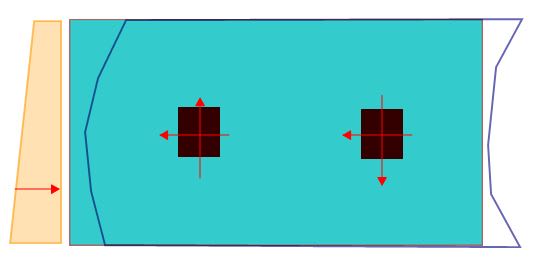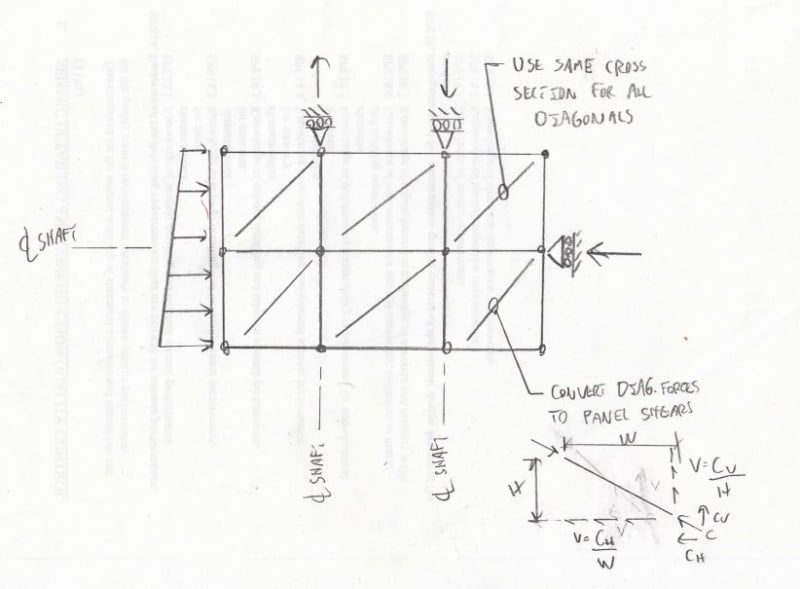I have been tasked with site adapting a 5 story office building (originally built in Iowa) to be constructed at a new site in Nebraska. The original design (done by another engineer) utilizes two concrete shear towers for lateral, located near the center of the building at approximately third points along the length of the building. There are no moment frames or braced frames at the perimeter. The roof diaphragm is wide rib metal deck, which I would typically assume to be flexible. As far as I can tell, the only way the original engineer could get lateral load distribution to work at the roof is assuming the diaphragm resists some amount of torsion. I typically try to avoid that with a flexible diaphragm.
Any recommendations on tackling how to analyze torsional strength/stiffness of a flexible diaphragm?
Any recommendations on tackling how to analyze torsional strength/stiffness of a flexible diaphragm?



